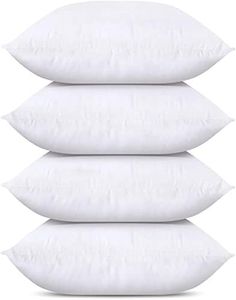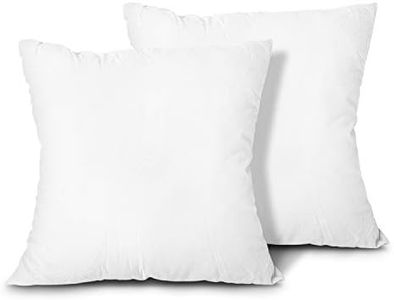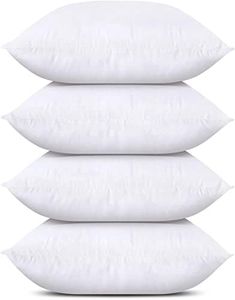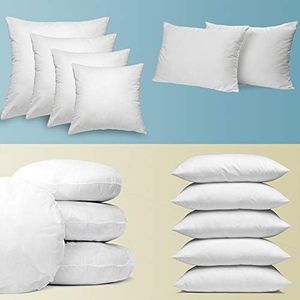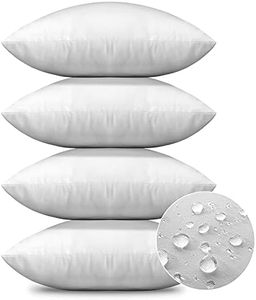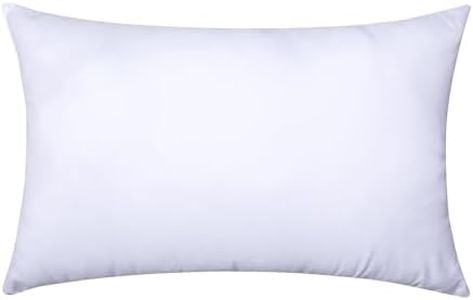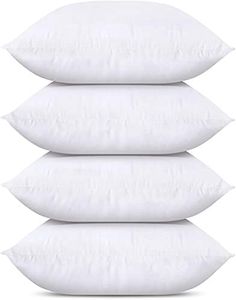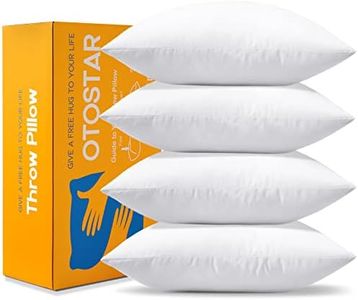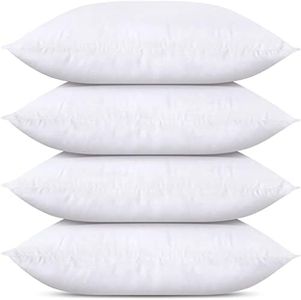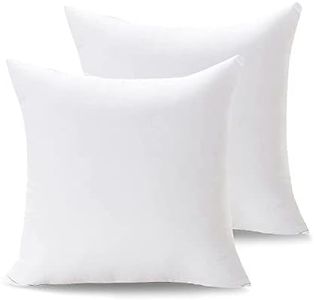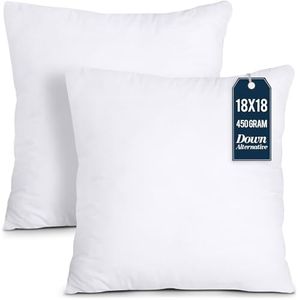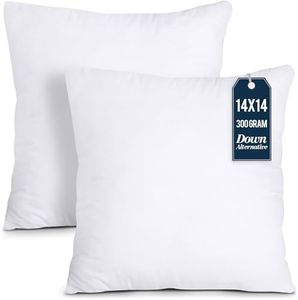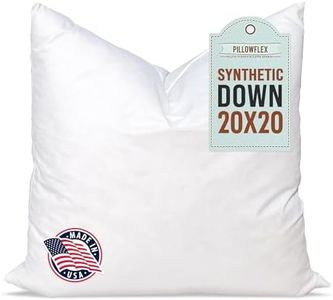We Use CookiesWe use cookies to enhance the security, performance,
functionality and for analytical and promotional activities. By continuing to browse this site you
are agreeing to our privacy policy
10 Best Cushion Inserts
From leading brands and best sellers available on the web.By clicking on a link to a third party's website, log data is shared with that third party.
Buying Guide for the Best Cushion Inserts
When shopping for cushion inserts, it's important to remember that these are the core of your pillows and significantly affect both comfort and appearance. The right insert will make your cushion look inviting and feel just right—whether you’re lounging, supporting your back, or simply decorating. The trick is to balance comfort, durability, and the look you want. When choosing, think about what the cushion will be used for, how much support you’d like, and the type of covers you'll use. Always consider the space and the people using the cushions—are they for a busy, family room sofa or for occasional decorative accents?Fill MaterialFill material refers to the substance inside the cushion insert, such as polyester, feather, down, or foam. It’s crucial because it determines how the cushion feels and performs. Polyester is lightweight, hypoallergenic, and provides a medium amount of support—good for general decorative use. Feather and down are softer and create a plush, luxurious feel, but may need fluffing and aren't ideal for people with allergies. Foam offers firmer support, which can be great for back cushions or if you like a more structured look. Consider your needs: for everyday comfort and allergy concerns, polyester or foam are safe picks, while feather and down work better for occasional or decorative cushions.
SizeThe size of a cushion insert determines how full and supportive your pillow will appear inside its cover. Inserts usually come in standard dimensions but should typically be about one or two inches larger than the cushion cover for a plump, well-filled look. Using an insert that's too small can make the cushion look flat and lifeless, while one that's too large can create an overstuffed or bulging effect. Decide on the look you want: for a well-filled, professional finish, always size up slightly compared to your pillow cover dimensions.
ShapeCushion inserts are available in several shapes—square, rectangular (or lumbar), round, and even specialty shapes. The shape you choose should match the cover and suit the intended use. Square inserts are classic and most versatile, rectangles provide lower back support or visual interest, and round or specialty shapes are often used for decoration. Consider where your cushions will go and what kind of support or statement you need; for sofas, mix and match shapes for comfort and style.
FirmnessFirmness describes how much support and give a cushion insert provides. Some inserts are soft and squishy, while others are quite firm and resilient. If you want your cushion mainly for decoration, a softer insert creates a relaxed, casual look. For back support or regular seating use, a firmer insert helps maintain shape and comfort over time. Choose according to usage: go softer for decorative accent pillows and firmer for cushions that will be used a lot or for back support.
Cover Material and ConstructionThe outer casing of the cushion insert matters because it affects durability, feel, and the ability to contain the inner filling. Most inserts use cotton or a cotton blend, which is breathable and gentle. Tight stitching and a well-made cover prevent leaks (important for feather and down) and add longevity. Check for quality construction if you plan to use or wash the cushion often, or if allergies are a concern. For heavy use or allergy-sensitive households, pick inserts with tightly woven or hypoallergenic covers.
